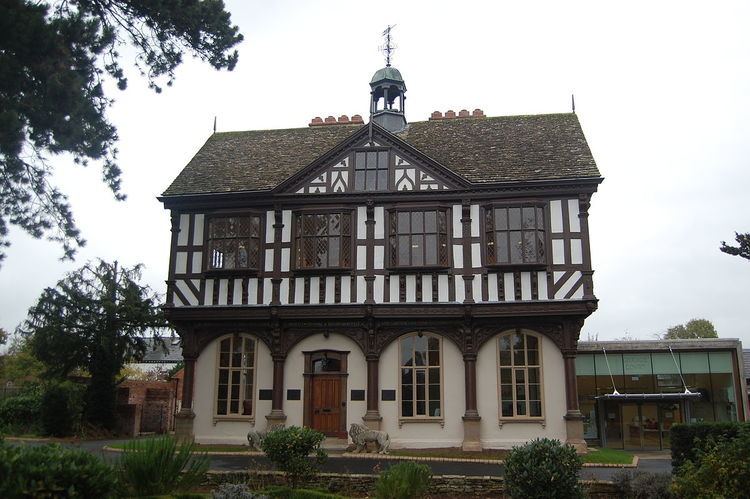Former names The Butter Crosse Completed 1633 | Country England Renovated 18592013 Phone +44 1568 737980 | |
 | ||
Hours Closed today SaturdayClosedSundayClosedMonday10AM–4PMTuesday10AM–4PMWednesday10AM–4PMThursday10AM–4PMFriday10AM–4PM Similar Stockton Bury Gardens, Hampton Court - Herefordshire, Priory Church - Leominster, Leominster Museum, Leominster railway station | ||
Grange court guernsey
Grange Court is a former market hall in Leominster, Herefordshire, England. It was built in 1633 by John Abel, and moved to its present location in 1859. It was then used as a private house until the 1930s, and is now once again a civic building.
Contents
Architecture
The timber-framed building is extravagantly decorated with carvings, including mermaids, angels, animals, flowers and grotesque people. The entablature above the columns includes a number of carved texts. These read:
When built by John Abel in 1633, the market hall was open at ground level, being supported on twelve oak columns. It was known as "the Butter Crosse". It has a stone tile roof, a bellcote, and a weathervane dated 1687.
Original site
The market house originally stood on the site of an earlier market building, at the junction of Broad Street, High Street, Church Street, Drapers' Lane, High Street and Burgess Street. In addition to public meetings, it was used for meetings of the town's nine guilds (bakers, butchers, dyers, glovers, mercers, shoemakers, tailors, walkers (fullers) and weavers) and Quarter Session courts, and the town council met there from 1750.
Rebuilding and later use
Eventually, congestion caused by the building's location at an important junction led to calls for its removal. The building was dismantled and stored in the mid-1850s.
It was purchased at auction for £95 by John Hungerford Arkwright, who offered the building to the council if they would re-erect it, but they refused. He moved the building himself and rebuilt it near the priory church in 1859. In the process, the ground floor was enclosed, a three-storey brick extension added at the rear, and the roof replaced.
At some point two terracotta panels by the Leominster sculptor William Storr-Barber (died 1934) were added to the interior.
In 1939, Leominster District Council acquired the building for £3,000 through a compulsory purchase order, thereby thwarting an apparent plan by William Randolph Hearst to remove it for reuse as a gatehouse at St Donat's Castle.
Until 2008, it was used as council offices by the District Council, and later Herefordshire County Council. In 2001, a campaign was started to raise money to restore the building. The work was completed in 2013 and the building, with a modern annexe, is now a community centre (a Community, Enterprise and Heritage Hub), owned by LARC Development Trust, a registered charity which purchased it from Herefordshire County Council for £1 in June 2013, as an instance of community asset transfer.
The building is Grade II* listed and is licensed for the conduct of civil marriage ceremonies.
Model
A bronze model of the house in its earlier configuration now stands at its original location.
